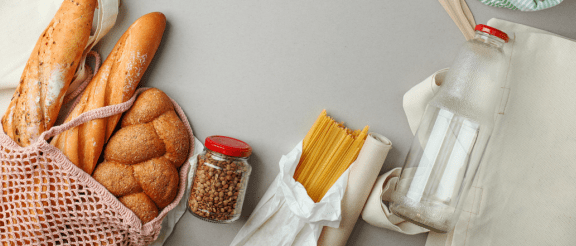KIDV continues as Verpact
November 6, 2025
Cleaning and return logistics are two important factors when using reusable food packaging. What requirements do these packaging materials, such as meal containers, have to meet in order to be reused according to the various parties in the chain? Two participants in the Community of Practice on Reusable Packaging conducted research on behalf of the KIDV to gain more insight into this and to answer the question of how standardisation of the packaging can help.
PackBack (formerly Shared Packaging) investigated whether and how standardisation of reusable packaging can be introduced. The research consisted of desk research and interviews with companies in the chain, including food producers, producers and distributors of packaging, logistics service providers and producers of washing installations. The objective was to gain insight into the requirements of different actors for primary reusable food packaging, for the most efficient and effective cleaning and return logistics.
Based on experiences in practice, functional and non-functional requirements were identified, for example for material use, heat resistance, transport and cleaning. One of the outcomes is that square and rectangular shapes of primary meal containers are preferable, both from a logistical and cleaning point of view. "We want the study to contribute to the acceleration and adoption of primary reusable food packaging systems," says Tine Bakia from PackBack. "It also provides an incentive for further research into the standardisation of these systems, such as those that already exist for secondary and tertiary packaging. Think of crates, barrels and pallets."
Click here for the PackBack report.
YOYO.BoostReuse investigated the influence of frequent washing of reusable meal containers. Food containers of ten different types of material were tested. The aim of this experiment was to gain practical knowledge about potential risks and benefits of industrial washing of reusable meal containers. They should always look clean and fresh, without any major damage. Joanna Olszanska (YoYo): "This study looked at the effects of washing and storing food on the different types of containers, such as colour and discolouration of the packaging, the retention of drops and stains, odour residue and scratch resistance."
Click here for the report from YOYO.BoostReuse.
The studies offer providers and users of primary food packaging, as well as logistics and industrial parties, the opportunity to provide an efficient solution for the use of reusable packaging. "It gives all parties in the chain, from packaging producer to retailer, tools to get started with reusable packaging, both its development and the choice of the optimal packaging. Furthermore, the insights from these studies offer companies operating in the out-of-home sector the opportunity to work together to implement reusable packaging as efficiently and cost-effectively as possible," says Marcel Keuenhof, packaging expert at the KIDV and project manager of the CoP Reusable Packaging.
This community consists of parties who want to make their packaging more sustainable by studying and implementing reusable options. Supermarkets, brand owners, service providers, start-ups, knowledge institutions and NGOs all participate in this community. Does your company want to participate? Click here for more information. You can also join the private LinkedIn group to stay up to date with the latest developments.
